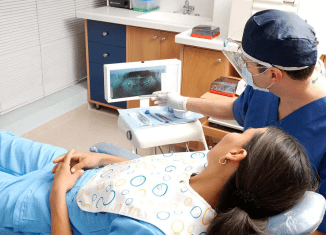Artificial Sweeteners And Health Carbohydrates are a significant energy source, making up forty (40%) to eighty (80%) of our daily consumption. They exist in two forms: free sugars and nonfree sugars. Nonfree sugars are found naturally in foods like fruits, vegetables, grains, and dairy. In contrast, free sugars are added during
Full-Body Checkups: How Routine Health Assessments Can Save Lives
Full-Body Checkups: How Routine Health Assessments Can Save Lives In our busy lives, it's easy to let health checkups slide down the priority list. However, routine full-body checkups are crucial. They don’t just help us live longer; they significantly boost our quality of life. Let's explore how these regular health evaluations can
Weight Maintenance Success Of Antiobesity Medications After 1 Year
Weight Maintenance Success Of Antiobesity Medications After 1 Year Overview The high cost of novel glucagon-like peptide-1 receptor agonists (GLP-1 RAs) often limits their accessibility, creating significant barriers to care. This study explored the effectiveness of older, generic anti-obesity medications (AOMs) in sustaining weight loss after a year of GLP-1
Coffee Consumption And Metabolic Syndrome
Coffee Consumption And Metabolic Syndrome Overview This study explores the relationship between coffee consumption and metabolic syndrome, along with its individual components, while also examining the influence of milk, sugar, and artificial sweeteners on these associations. The research involved a cross-sectional analysis of 351,805 participants from the UK Biobank. Data on
Food Addiction Therapy For Weight Loss Treatment
Food Addiction Therapy For Weight Loss Treatment Overview Food addiction (FA) may serve as a potential predictor of outcomes in weight loss interventions. This systematic review and meta-analysis aimed to evaluate (1) the impact of FA diagnosis and symptom severity on weight loss outcomes in individuals with overweight or obesity,
Intracranial Aneurysm And Gut Health
Intracranial Aneurysm And Gut Health Intracranial aneurysm (IA) is a pathological dilation of the intracranial artery wall, most commonly occurring in the circle of Willis, with an incidence rate of around 3% in the general population. While unruptured IAs (UIAs) are often asymptomatic, the rupture of an aneurysm leads
Sarcopenia Screening For Mortality In Oncology Patients
Sarcopenia Screening For Mortality In Oncology Patients Overview This study evaluated the effectiveness of a sarcopenia screening test in predicting mortality among cancer inpatients. Conducted over five months, 82 patients admitted to an oncology ward in southern Taiwan were assessed and followed for three years. Each participant underwent a comprehensive
Weight Loss App: New Interventions
Weight Loss App: New Interventions Overview Many individuals with obesity struggle to sustain weight loss after completing a diet-based intervention. A significant reason for this is that traditional weight loss methods often fail to address the natural regulation of hunger and fullness, leading to a return to previous eating behaviors over time.
Hearing Loss And Functional Decline
Hearing Loss And Functional Decline Overview Hearing loss has been recognized as one of the major modifiable risk factors for cognitive decline and dementia. However, studies exploring this connection have yielded mixed results. This study aimed to assess the long-term relationship between self-reported hearing loss and cognitive/functional abilities in 695 cognitively
Hip Fractures: Pain Meds And Pain Intensity Scores
Hip Fractures: Pain Meds And Pain Intensity Scores Overview Following proximal femoral fractures (PFF), pain is a prevalent symptom, yet there is limited information regarding effective treatment options, including the types of medications used and their administration methods (scheduled versus as needed). This study aimed to analyze pain medication regimens

